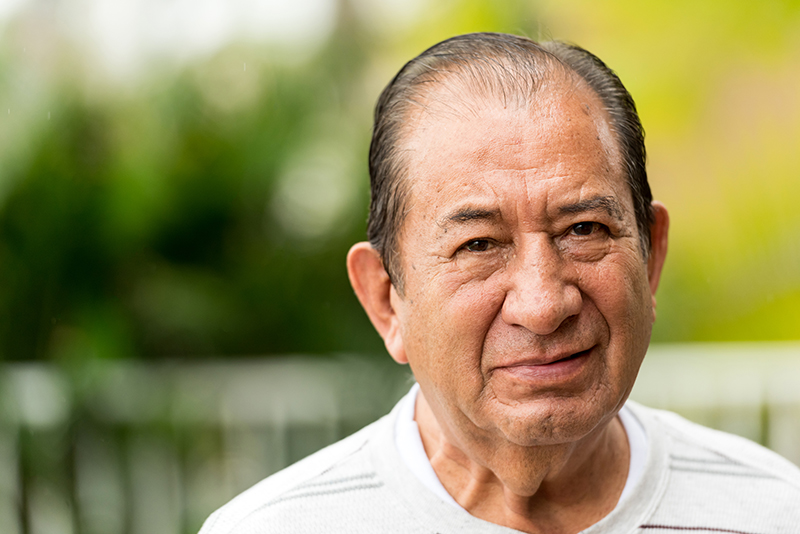The physical changes of aging: Part Two

In our previous Pathway to Health, we looked at several of the physical changes that come with aging. In this issue, we explore additional physical changes in other areas of the body.
Brain health: The brain undergoes many changes as people get older. Some parts of this complex organ – the ones involved in memory and higher cognition – start to shrink. It takes longer for our neurons, the brain cells responsible for sending and receiving messages, to communicate. Blood flow to the brain may decrease. But there is good news, too: the brain is both resilient and flexible, and it changes to adapt and compensate for losses. We still learn new things as we age; it just might take longer for us to recall the information. If you notice changes that worry you, however – such as memory loss that interferes with daily life, difficulty doing routine tasks, or problems with speaking – see your physician. These and other symptoms could be signs of dementia, and early diagnosis can improve response to treatment.
Cardiovascular health: The risk of heart disease and stroke increases with age. For heart disease, the risk increases for men who are over 45 and women who are over 55 or who have gone through menopause. Two-thirds of strokes occur in people over age 65. Heart disease and strokes share many risk factors, including high blood pressure, high blood cholesterol, being overweight, smoking, lack of exercise, an unhealthy diet, and having high or prolonged levels of stress. Having certain other diseases, such as diabetes or an autoimmune disorder, can also raise your risk of heart attack. Many of these risk factors
are modifiable, and making healthy lifestyle changes can make a big difference.
Balance: Problems with balance – including dizziness, vertigo (spinning sensation), unsteadiness, faintness, feeling light-headed, disorientation or blurred vision – happen more often as people get older, making it more difficult to safely walk, use stairs, bend over or participate in physical activities. Balance problems increase the risk of tripping and falling, which can have serious health consequences for seniors. The causes of poor balance include weakened eyesight, vestibular (inner ear) problems, reduced blood circulation, arthritis, numbness in the legs or feet (neuropathy), diseases affecting the nervous system (such as Parkinson’s disease) and side effects of medication. See your physician if you notice problems.
Hernias
There are different types of hernias that become more common with age:
- Inguinal hernia – As we get older, our abdominal muscles become weaker. Sometimes, tissue (such as part of the intestine) protrudes through the muscle, creating a bulge near the pelvic bone. It can cause pain, a heavy or aching sensation, weakness or pressure. While lying down, gently push the bulge back. If you can’t, the hernia might be trapped in the abdominal wall. This can be dangerous if not treated. See your physician as soon as possible; if the bulge turns red, purple or dark in colour, get medical help right away.
- Hiatal hernia – With this type of hernia, the upper part of the stomach bulges through the diaphragm. A small hiatal hernia is harmless and you may not even notice it. A large one can cause problems in your esophagus, including heartburn, regurgitation, swallowing problems, acid reflux, chest pain, shortness of breath, vomiting of blood, or black stools (containing blood). Consult your physician if you notice these or other troublesome symptoms.
Anemia: Is a deficiency of red blood cells or hemoglobin in the blood, is common among seniors. There are several possible causes, such as iron deficiency, chronic disease, vitamin B12 deficiency, bleeding or a lack of new red blood cell production. Anemia can happen quickly or gradually, depending on the cause. See your physician if you notice unusual symptoms like fatigue, weakness, pale or yellowish skin, shortness of breath, rapid or irregular heartbeat (arrhythmia), dizziness, cold hands and feet, chest pain or headache. He or she will conduct blood tests, and perhaps other tests, to make a diagnosis.
Varicose veins: Have you noticed enlarged, bulging, twisted or darker-coloured veins, especially in your feet or legs? These are varicose veins (or spider veins,
which are smaller, milder and closer to the skin’s surface). They’re more common in older adults because veins lose elasticity with age, and they stretch. The valves in veins also get weaker, allowing blood to pool. Varicose veins are often harmless, but sometimes they can cause discomfort, pain, throbbing or achiness. Women, people who are obese, and people who stand or sit for long periods are at higher risk of varicose veins. Self-care such as exercise, eating a diet high in fibre and low in salt, elevating your legs and wearing compression stockings can ease the discomfort. If these methods aren’t helpful, talk to your physician.
Urinary incontinence: This is a common problem among Canadian seniors – one in five has difficulties with bladder control. Incontinence can cause great distress and affect a person’s quality of life. It can often be controlled or cured, so it’s wise to consult a physician and explore treatment options.
Resources
Heart and Stroke
Heart and Stroke provides tips on reducing your risk of heart disease and stroke,
as well as how to recognize the signs of a heart attack or a stroke.
www.heartandstroke.ca
Alzheimer Society of Canada
Learn about brain health, Alzheimer’s disease and other types of dementia.
www.alzheimer.ca
